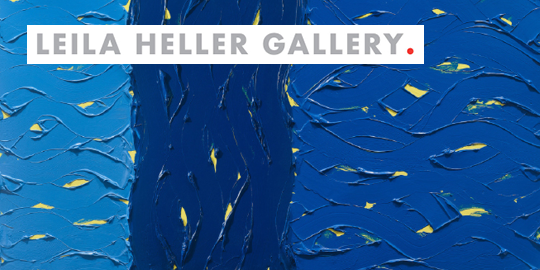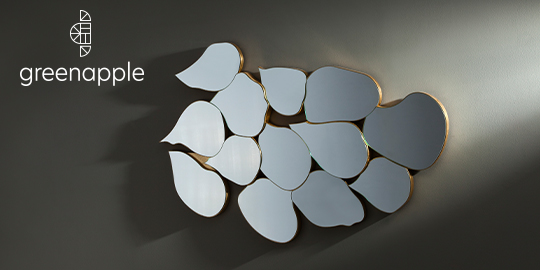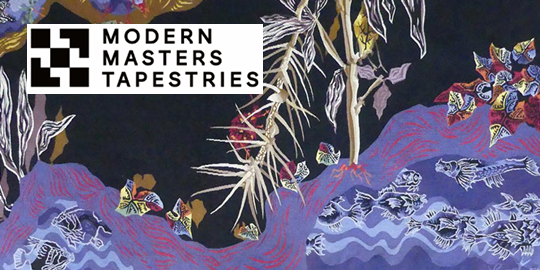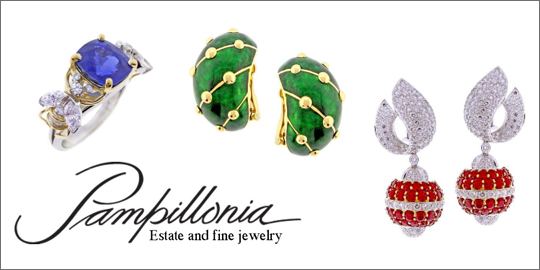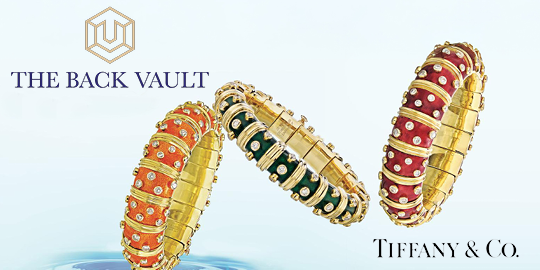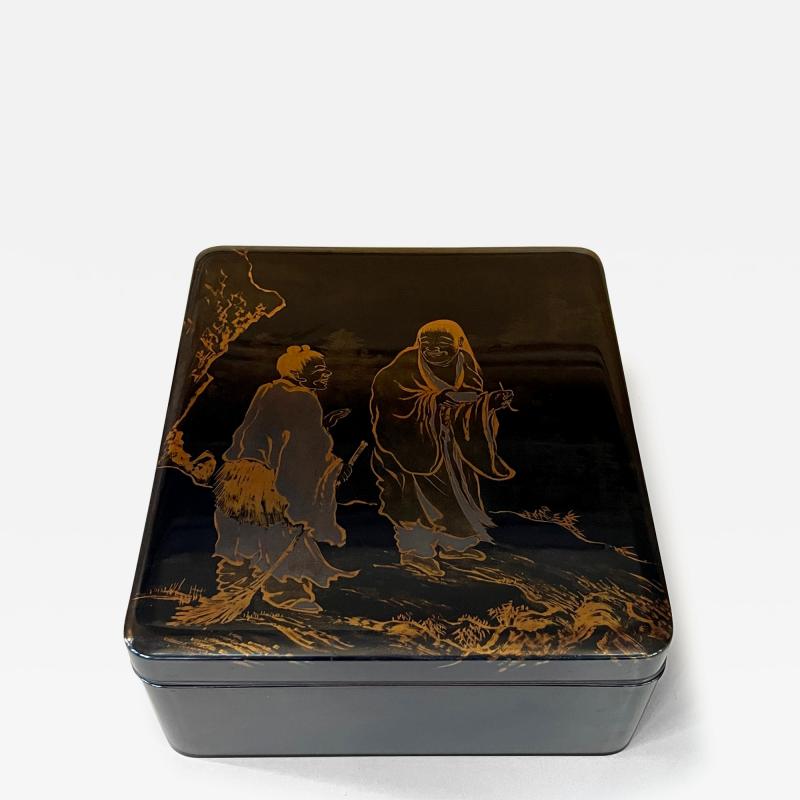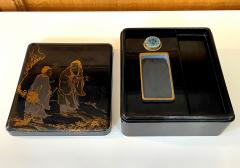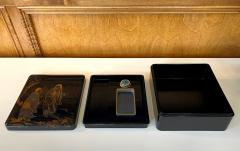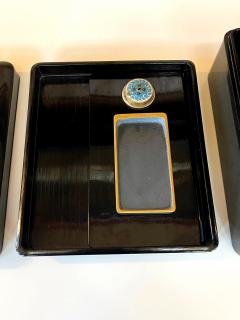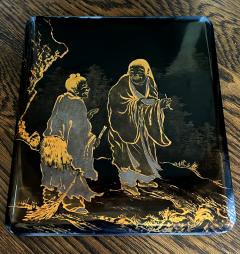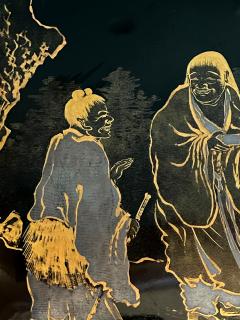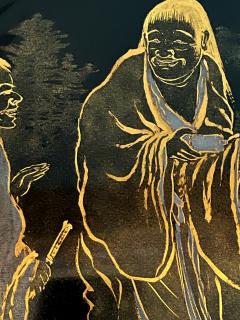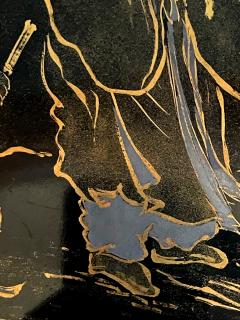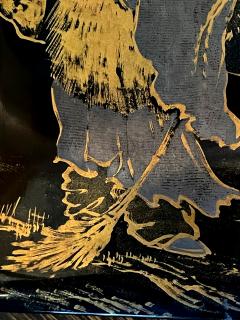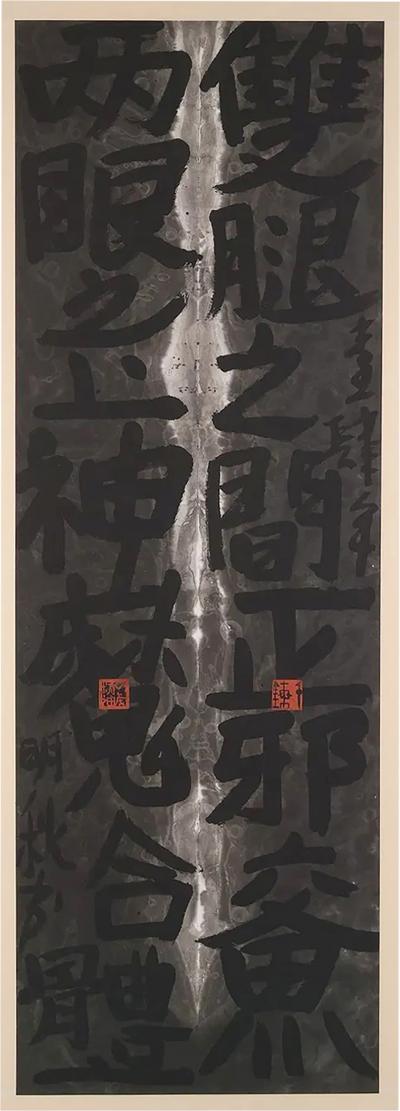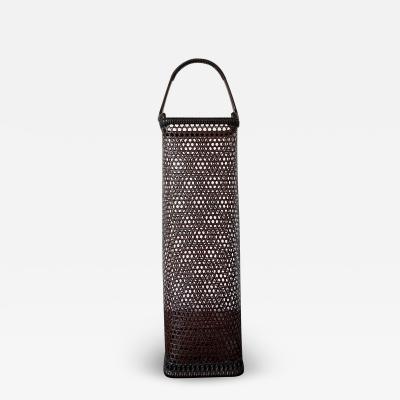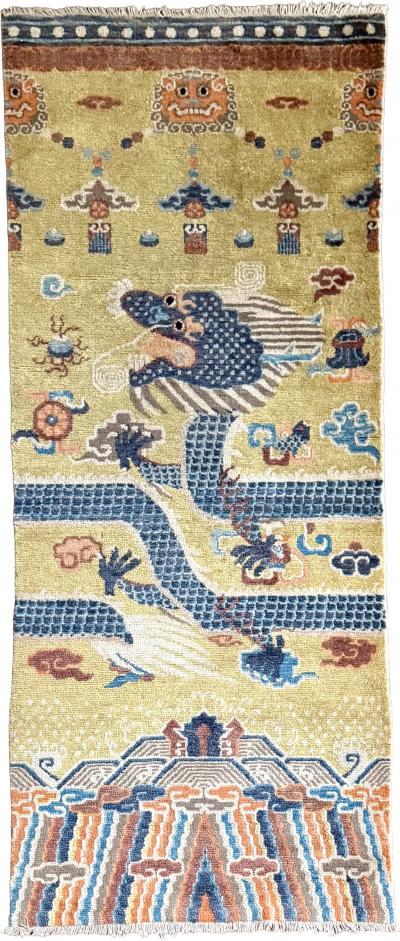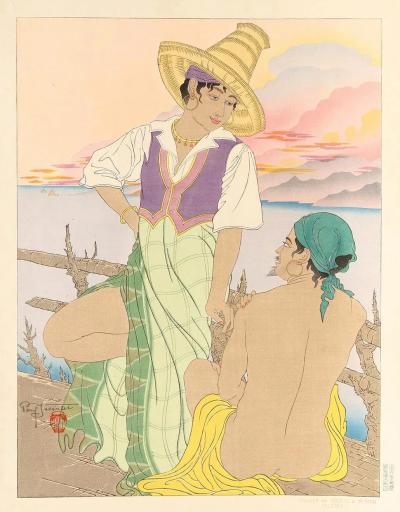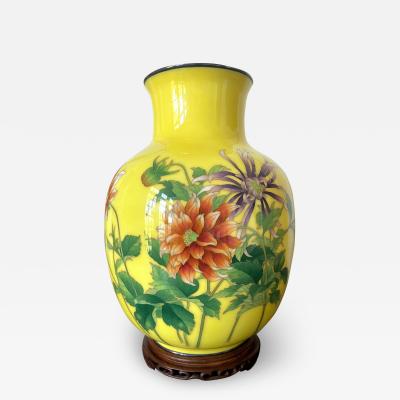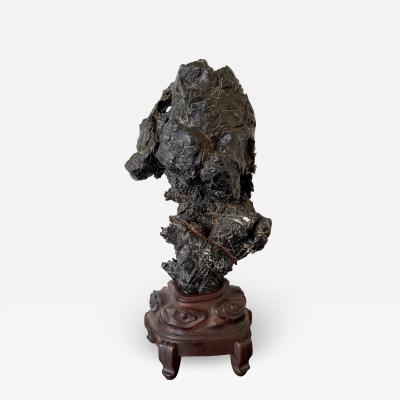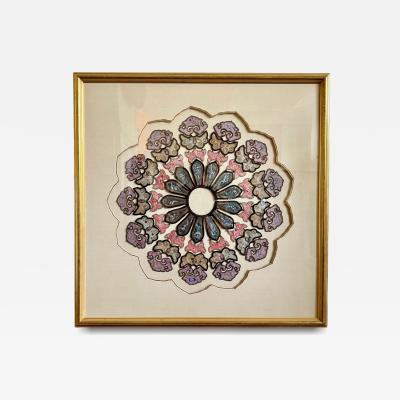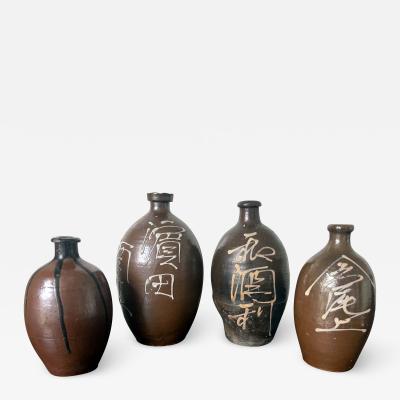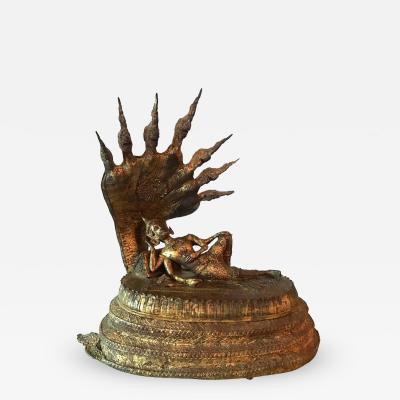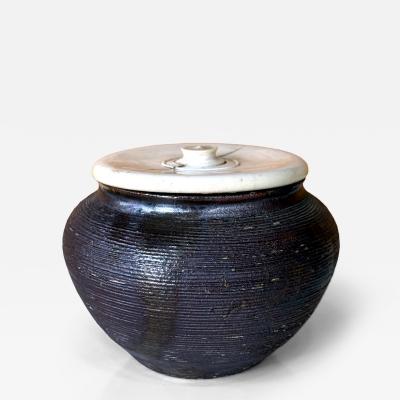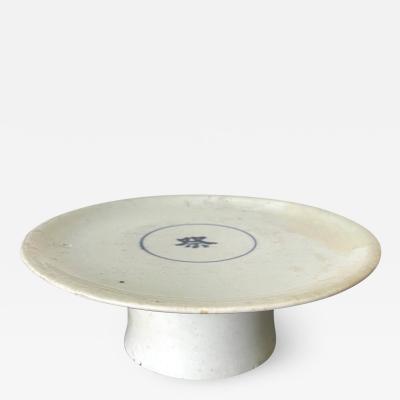Japanese Lacquer Maki-e Tiered Scholar Suzuribako and Ryoshibako
-
Description
A Japanese roiro lacquer scholar combo box with an upper tier of inkstone box (Suzuribako) and a lower document box (Ryoshibako) circa 1910-30s (end of Meiji to Showa period). The high glossy box was beautifully decorated with an image of the famously eccentric Buddhist monks Hanshan and Shide (known in Japan as Kanzan and Jittoku). Often as a pair, they have been a popular motif in Japanese Zen painting, representing deeper philosophical meanings and mysterious symbolism.
Hanshan or Kanzan ("Cold Mountain") and Shide or Jittoku ("found") were legendary Zen monks living in the Tang Dynasty (618–907) of China. The two close friends were often depicted as unconventional mystics, disheveled in appearance and mischievous in manners. Kanzan is identified by the pen and scroll he holds while Jittoku by a broom as he worked a kitchen cleaner. It was said that they communicated with a gibberish language only understood by them and were deemed lunatic and carefree. In Japan, starting in the Muromachi period (1336-1573), they were regarded by many scholars as the incarnations of Manjusri (Monju) and Samantabadhra (Fugen) and became a very popular motif in Zen Buddhism art.
The rendition of the two monks on the box cover is very similar to ink painting except that it was done in hiramaki-e technique. Confident, bold strokes and contrasting colors of gold and silver were used to create a slightly abstract illustration with depth and dimension. The faint forest in the background was executed in the Togidashi, the demanding technique achieved a desired misty and dreamy effect. The composition works very well with the contrasting techniques and together, they achieve a painterly quality on a different art medium.
The Suzuribako contains a suzuri (ink-stone) with fundame trim and a round cloisonne suiteki (water dropper) with wave design. While the exterior of the box is largely glossy black, the interior was rendered in contrast with texture of vertical ripple lines. -
More Information
Origin: Japan Period: 1920-1949 Materials: lacquer wood metal stone Condition: Good. Good condition with minor surface wear and a couple of surface scratches on the base. One corner of the lower box has a thin crackle line, not readily noticeable. Creation Date: 1910-30s Styles / Movements: Asian, Traditional Patterns: Asian/Oriental, Handmade Incollect Reference #: 600793 -
Dimensions
W. 9.5 in; H. 4.125 in; D. 10.5 in; W. 24.13 cm; H. 10.48 cm; D. 26.67 cm;
Message from Seller:
Tishu, based in Atlanta, GA, offers a diverse collection ranging from Neolithic art to 20th-century collectibles, with a focus on Mid-century design, Japanese and Korean art, Asian textiles, and Contemporary Aboriginal art. Driven by a passion for timeless beauty, the gallery is open by appointment only and offers works that span 5,000 years of history. Reach them at 305-400-0561 or tishu@tishugallery.com.


